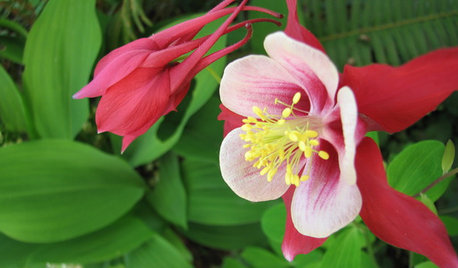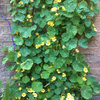Why a grow plants from seed?
bugbite
13 years ago
Featured Answer
Sort by:Oldest
Comments (16)
countrycarolyn
13 years agolast modified: 9 years agobugbite
13 years agolast modified: 9 years agoRelated Professionals
New Bedford Landscape Architects & Landscape Designers · Tempe Landscape Architects & Landscape Designers · Hershey Landscape Architects & Landscape Designers · Bergenfield Landscape Contractors · Emmaus Landscape Contractors · Franklin Landscape Contractors · Golden Gate Landscape Contractors · Streamwood Landscape Contractors · Royal Oak Driveway Installation & Maintenance · Ashland Decks, Patios & Outdoor Enclosures · Champaign Decks, Patios & Outdoor Enclosures · Fort Mill Decks, Patios & Outdoor Enclosures · Harrisburg Decks, Patios & Outdoor Enclosures · Springfield Decks, Patios & Outdoor Enclosures · St. Louis Decks, Patios & Outdoor EnclosuresDonna
13 years agolast modified: 9 years agozen_man
13 years agolast modified: 9 years agobugbite
13 years agolast modified: 9 years agozen_man
13 years agolast modified: 9 years agocountrycarolyn
13 years agolast modified: 9 years agobugbite
13 years agolast modified: 9 years agozen_man
13 years agolast modified: 9 years agobugbite
13 years agolast modified: 9 years agocalistoga_al ca 15 usda 9
13 years agolast modified: 9 years agozen_man
13 years agolast modified: 9 years agoamergardenaward
13 years agolast modified: 9 years agozen_man
13 years agolast modified: 9 years agobugbite
13 years agolast modified: 9 years ago
Related Stories

CONTAINER GARDENS8 Easy Container Plants to Grow From Seed
Get beautiful blooms and herbs in summer by starting these choice garden picks from seed in spring
Full Story
GARDENING GUIDESHow to Plant a New Lawn From Seed
Choose from more grass varieties and save money over sod by starting your lawn from seed
Full Story
GARDENING GUIDESSeeds or Seedlings? How to Get Your Garden Started
Growing delicious herbs and vegetables starts with knowing your goals and when you want to plant
Full Story
GARDENING FOR BUTTERFLIESGreat Design Plant: Columbine Grows Happily in Shade and Sun
Its ethereal beauty comes from complex forms and wide-ranging colors, but columbine’s benefits are highly attractive too
Full Story
NATIVE PLANTSGreat Native Plant: Grow Wild Quinine for Its Unique Clusters of Blooms
Get connoisseur cred and unique blooms with this uncommon plant. Bonus assets: It’s low maintenance and drought tolerant
Full Story
GARDENING GUIDESGreat Design Plant: Grow Blueberries for Their Fruit and More
Eastern gardeners should consider growing blueberry plants for their delicious fruits, bee-friendly spring blooms and brilliant fall foliage
Full Story
GARDENING GUIDES7 New Plants to Grow for Beautiful Foliage
Add color, structure and interest to your garden with these recently introduced plants that sport exceptional foliage
Full Story
GARDENING GUIDES8 Plants That Snobs Love to Hate — and You'll Love to Grow
Don't dismiss these common annuals, perennials and shrubs — there are reasons they've been popular for so long
Full Story
WINTER GARDENINGExtend Your Growing Season With a Cold Frame in the Garden
If the sun's shining, it might be time to sow seeds under glass to transplant or harvest
Full Story
EDIBLE GARDENSSummer Crops: How to Grow Tomatoes
Plant tomato seedlings in spring for one of the best tastes of summer, fresh from your backyard
Full StoryMore Discussions










mxk3 z5b_MI